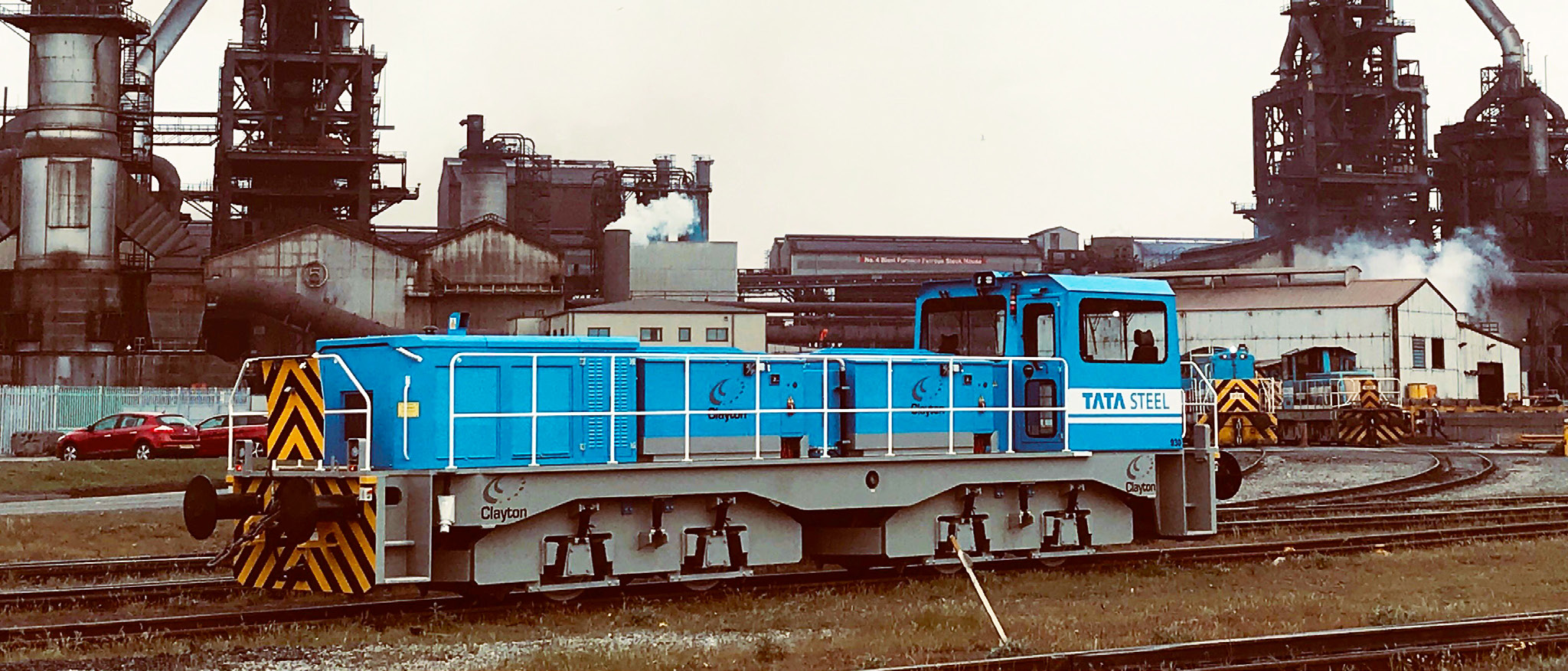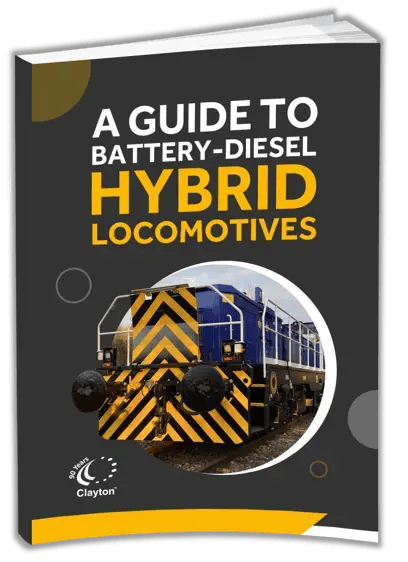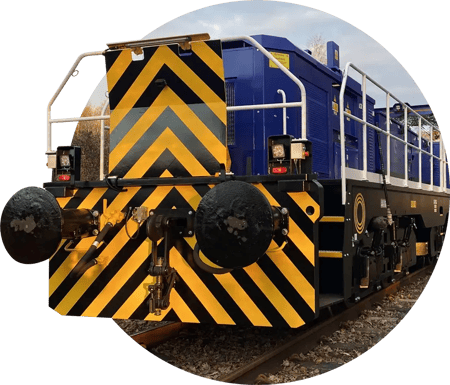A Guide To Battery-Diesel Hybrid Locomotives
Contents
A Guide To Battery-Diesel Hybrid Locomotives: The Future Of Rail Transport
Around the world, a significant percentage of all locomotives are currently diesel-powered. The high level of torque and pulling power, combined with an existing diesel-based infrastructure, has made this engine type the obvious choice for both public and private rail operators. But over the coming decades, things are set to change.
A combination of specific factors means that pure diesel locomotives will gradually become phased out over the next twenty years. These factors include regulatory pressure and legal compliance in the form of governmental targets and agreements, such as the Paris Climate Agreement. They also include public opinion, which has swung firmly in favour of more environmentally friendly fuel sources in recent years, which in turn is driving the move towards a higher degree of corporate responsibility. Another key factor has been the increasing development and reduced costs of alternative power sources, such as battery electric, fuel cells and more.
What this means in practice is that by 2050 low-emission hybrid locomotives will almost certainly have replaced more traditional diesel-powered engines on railways around the world. So, just what is a battery-diesel hybrid locomotive? What role do they look set to play across the transport industry? And what are the key benefits motivating many companies to make the switch well ahead of just meeting their compliance targets?
.webp)
The Concept Of Hybrid Locomotives
Hybrid locomotives utilise both a diesel engine and battery power source, with the diesel engine contributing less than the battery in the traction drive. In general, they have three driving modes and three charging modes, which are automatically controlled by an onboard computer. The three driving modes include:
.webp?width=990&height=683&name=Finalised%20Clayton%20Equipment%20Guide%20-%20A%20Guide%20To%20Battery-Diesel%20Hybrid%20Locomotives%20(2).webp)
- Pure diesel generator set drive
- Battery pack drive
- Hybrid drive
Depending on the circumstances, the computer will select which mode will act as the main power source. For example, when running at low power, the battery power pack has priority, whilst when running at medium power, either the diesel generator or the battery pack can drive motion. When running at high power, both fuel sources can be used simultaneously. The diesel generator can also be used to charge the battery power pack, but it will shut down when the locomotive is idling or on standby.
The three charging modes are also automatically selected to recover the maximum amount of energy from braking, and diesel generators are used to recharge the battery. This can help to prolong battery life during operation and maximise operational fuel efficiency.
This greater degree of efficiency, operational flexibility and reduced emissions makes hybrid locomotives far more cost-effective to run and maintain. The on-board computer can combine with Internet of things (IoT) technology and our Locowatch system that utilises remote condition based monitoring software to alert operators when errors or faults occur, or when routine maintenance needs to be carried out.
The Benefits Of Hybrid Locomotives
It’s worth taking a closer look at the significant advantages hybrid locomotive technology can bring. The easiest way to do that is to break these benefits down into four categories: environmental, economic and operational.
Environmental Benefits:
The reduced reliance on diesel fuel and greater ability to recapture expended energy can help to significantly reduce emissions, helping businesses to meet compliance and regulatory guidelines. It can also help to improve air quality in and around transport hubs and rail lines. At a time when emissions are a hot-button topic with both authorities and the general public, businesses need to seize the initiative and make positive changes to improve working practices wherever possible.

Economic Benefits:
The greater degree of fuel efficiency also leads to lower operating costs in terms of expenditure. Savings in this area will more than recover initial investment costs over time. However, hybrid locomotives also offer distinct benefits in terms of reduced maintenance, with a greater reliance on onboard technology giving operators a better overview of performance metrics and maintenance requirements.
.webp?width=2548&height=876&name=Finalised%20Clayton%20Equipment%20Guide%20-%20A%20Guide%20To%20Battery-Diesel%20Hybrid%20Locomotives%20(4).webp)
Operational Benefits:
This technological leap driving hybrid technology also leads to increased flexibility in terms of operations as well as improved performance. The reduced noise pollution, especially in residential areas, can help to encourage better relationships with the public. The use of new IoT technology, such as the LocoWatch™ feature provided by Clayton Equipment for all its locomotives, also gives you greater control and access to abundant data.
-1.webp?width=1869&height=876&name=Finalised%20Clayton%20Equipment%20Guide%20-%20A%20Guide%20To%20Battery-Diesel%20Hybrid%20Locomotives%20(7)-1.webp)
Extended Engine Life:
By utilising a plug-in battery diesel electric hybrid system, the locomotive can minimise the need for the engine to run when the locomotive is not moving. Modern diesel engines operate most efficiently and with improved life expectancy when loaded between 30% and 70%. Loading below 30% can lead to low engine temperatures which can lead to poor combustion, increased soot formation, and the accumulation of unburned fuel in the cylinder. These factors can deteriorate piston ring sealing efficiency, allowing hot combustion gases, soot particles, and unburned fuel to leak past the piston rings. As a result, lubricating oil consumption and dilution increase, reducing oil viscosity and potentially causing premature wear of critical engine components such as pistons, rings, liners, and crankcase bearings.
A plug-in battery diesel electric hybrid system allows the battery to handle peak loads and enables the engine to be turned off when stationary. This not only increases the engine's life in terms of running hours but also reduces the overall running time per shift. In a pure diesel system, the engine must run for the entire shift (approximately 6 hours per shift in a 3-shift operation), potentially reaching its expected life of 12,500 hours in 2 years.
-1.webp?width=1173&height=464&name=Finalised%20Clayton%20Equipment%20Guide%20-%20A%20Guide%20To%20Battery-Diesel%20Hybrid%20Locomotives%20(9)-1.webp)
However, a hybrid system can reduce engine running time to around 2 hours per shift, as it only needs to run to recharge the battery on demanding duties. In some cases, such as when operating on downhill gradients, the regenerative braking system can recharge the battery without running the engine at all, further extending its shift capacity.
By minimising engine usage and idling, hybrid locomotives substantially prolong the life of the engine and generator, reducing maintenance costs and improving overall efficiency.

A Guide To Battery-Diesel Hybrid Locomotives: The Future Of Rail Transport
In this guide, you'll discover:
-
How hybrid locomotives are revolutionising the rail industry.
-
The cutting-edge technology behind hybrid locomotives.
-
The environmental benefits and sustainability of hybrid technology.
-
Compelling reasons to adopt hybrid locomotives.
Simply fill in the form to get you FREE guide, delivered to your inbox.
Don't Miss Out!
Why Choose Hybrid Locomotives?
Whether you are looking to upgrade an existing locomotive fleet or to build a new one from scratch, why should you choose hybrid over diesel or pure battery-electric?
The reasons to choose a hybrid model over a pure diesel have been outlined extensively above. The hybrid option will help to significantly reduce emissions over traditional diesel options. This means cleaner air for operatives and the general public and a reduced carbon footprint for your organisation. There is also less noise pollution (up to 70% less in most cases), which can be a major issue in residential areas, especially when accelerating. The lower fuel consumption means a reduced expenditure, which will help to easily recover any initial outlay and improve ROI over time.
-1.webp)
The reasons to choose a hybrid over a pure diesel model are clear but why not go the whole way and opt for a 100% BEV locomotive? There are several key reasons which highlight the unique benefits of hybrids. For example, while battery-electric locomotives offer zero emissions and reduced noise pollution, they may have limitations in terms of range and charging infrastructure. This makes hybrid locomotives an attractive option for operations that require longer distances and greater flexibility of usage.
Similarly, while diesel locomotives offer long-range capabilities and established infrastructure, they come with higher emissions and fuel costs. Hybrid locomotives combine the benefits of both battery-electric and diesel locomotives, offering reduced emissions, lower fuel consumption and increased operational flexibility, making them a more sustainable and efficient choice for rail transport.
The reduced operating and maintenance costs of a hybrid locomotive provide long-term benefits that can help to offset the initial investment. This can lead to a greater potential return on investment, boosting your bottom line.
The Role Of Clayton Equipment In The Hybrid Locomotive Revolution
Founded in 1931, Clayton Equipment has an incredible pedigree in locomotive manufacture. It’s fair to say that we’ve seen a few things change in locomotive design in that time, but we’ve always managed to be at the forefront of innovation. And that hasn’t changed with the development of hybrid locomotives. We are a worldwide supplier of low and zero-emission locomotives for haulage equipment ranging from 1.75 to 150 tonnes, and we offer innovative solutions that are driving the future of the industry.
Our product range includes shunters/switchers, as well as locomotives for mining purposes. We also offer a special design and build service, including specialist machinery such as tunnel drilling and cable handlers. Whether you are overhauling or upgrading your existing equipment and converting to a diesel-electric hybrid, we can help you make the change.

.webp)
In addition to an extensive product range and bespoke design services, we can also offer locomotive consultancy and training services to address the specific requirements of your project. We can help you design new projects, providing advice and guidance on equipment and services you might need. We can also assist with the generation of technical requirements, project planning and delivery.
It's clear that if the time is not now, then it is coming soon, to make the change to reduced emissions hybrid technology. The benefits and advantages are clear, constituting the significant pull factors of reduced consumption and emissions. The push factors include forthcoming regulatory measures at a local, national and international level as laid out in proposals such as the Paris Climate Agreement.
Get In Touch
If it’s time for you to make the change to a more fuel-efficient, more environmentally friendly and increasingly efficient locomotive option, then you can discover your options with Clayton Equipment, one of the true innovators of hybrid locomotives. With more than nine decades at the forefront of locomotive technology, get in touch with our team to request a quote or book a demo, or simply to have a chat about your options.




